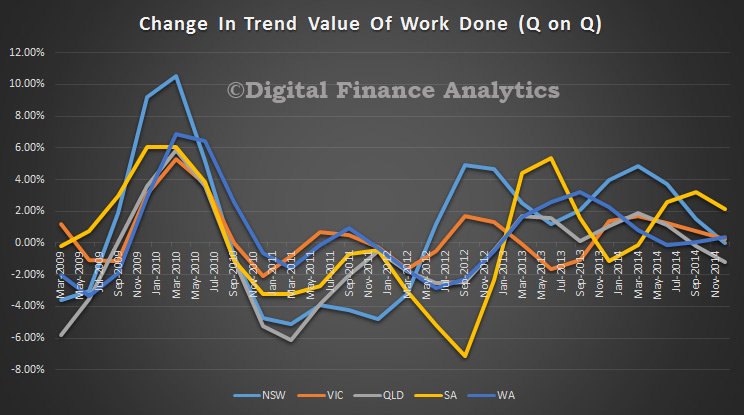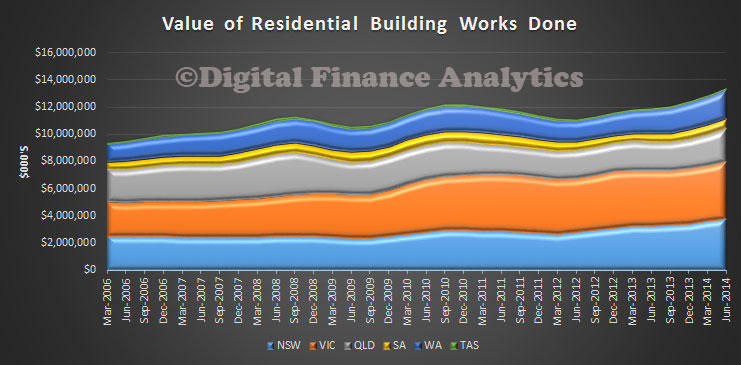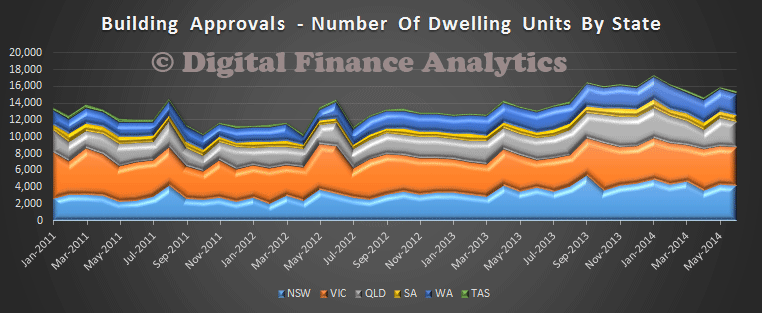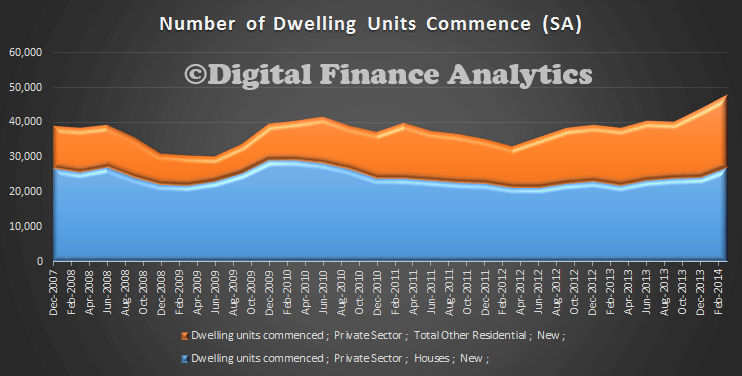The latest data from the ABS shows building construction activity to June 2017. We see a small rotation towards non-residential work, supported by investment from the public sector. The trend estimates, which irons out the bumps in the series, shows a rise in total building work done, with a fall in residential building of 1.2% and a rise in non-residential building of 2.8%.
Within the residential data, new houses fell 1.3% and other new residential building fell 1.0%.
The trend estimate of the value of total building work done rose 0.3% in the June 2017 quarter.
The trend estimate of the value of new residential building work done fell 1.2% in the June quarter. The value of work done on new houses fell 1.3% while new other residential building fell 1.0%.
The trend estimate of the value of non-residential building work done rose 2.8% in the June quarter.
The trend estimate for the total number of dwelling units commenced fell 3.0% in the June 2017 quarter following a fall of 2.8% in the March quarter.
The trend estimate for new private sector house commencements fell 1.6% in the June quarter following a fall of 2.7% in the March quarter.
The trend estimate for new private sector other residential building commencements fell 4.6% in the June quarter following a fall of 3.0% in the March quarter.










